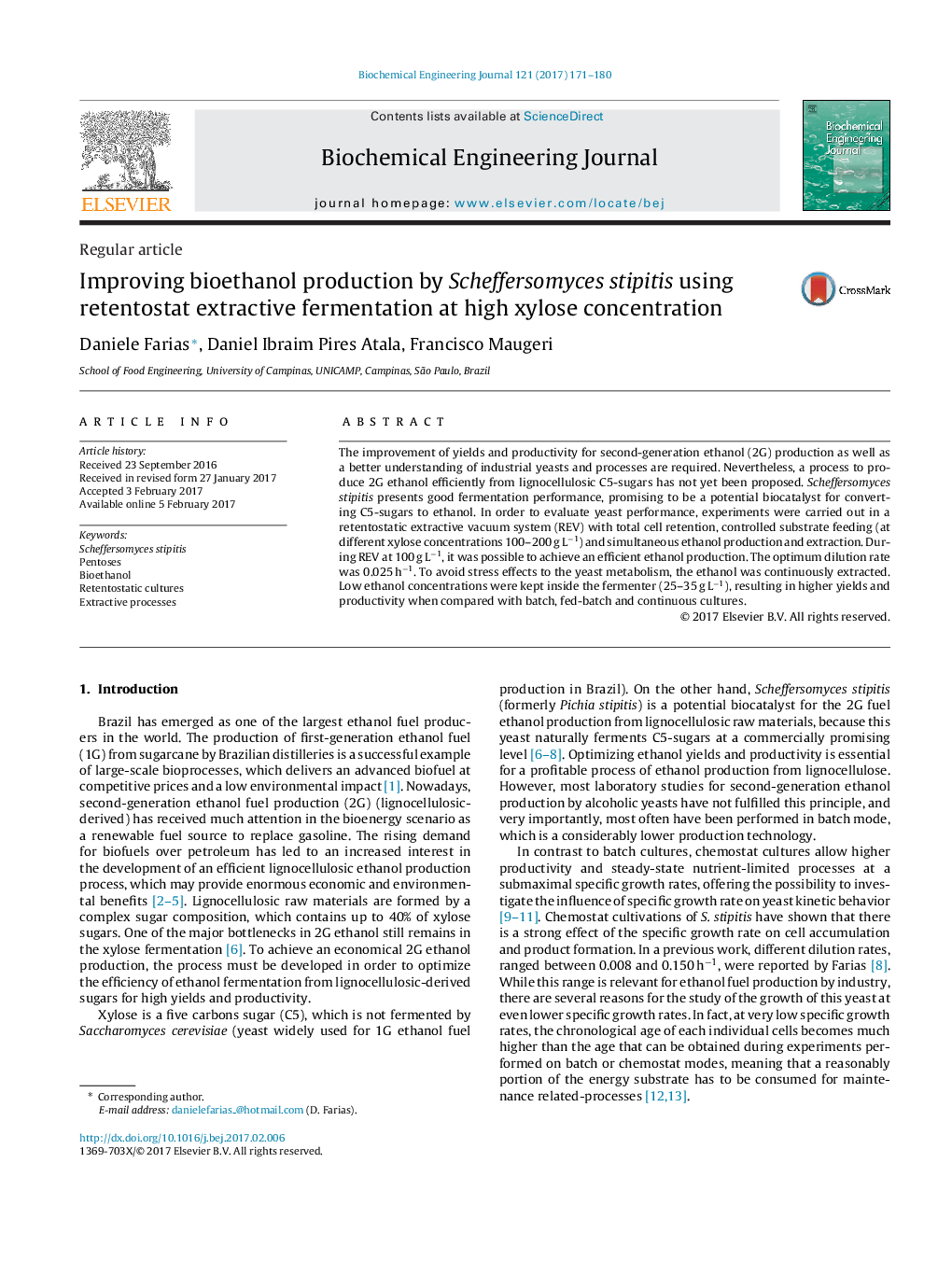| Article ID | Journal | Published Year | Pages | File Type |
|---|---|---|---|---|
| 6450398 | Biochemical Engineering Journal | 2017 | 10 Pages |
â¢An innovative process with simultaneous ethanol fermentation and extraction was developed.â¢High cell density of Scheffersomyces stipitis was achieved using retentostat extractive process.â¢Bioconversion of concentrated xylose feed streams was evaluated.â¢Ethanol levels were kept low inside the reactor avoiding inhibition.â¢Ethanol removal was an efficient strategy to increase xylose consumption and ethanol productivity.
The improvement of yields and productivity for second-generation ethanol (2G) production as well as a better understanding of industrial yeasts and processes are required. Nevertheless, a process to produce 2G ethanol efficiently from lignocellulosic C5-sugars has not yet been proposed. Scheffersomyces stipitis presents good fermentation performance, promising to be a potential biocatalyst for converting C5-sugars to ethanol. In order to evaluate yeast performance, experiments were carried out in a retentostatic extractive vacuum system (REV) with total cell retention, controlled substrate feeding (at different xylose concentrations 100-200 g Lâ1) and simultaneous ethanol production and extraction. During REV at 100 g Lâ1, it was possible to achieve an efficient ethanol production. The optimum dilution rate was 0.025 hâ1. To avoid stress effects to the yeast metabolism, the ethanol was continuously extracted. Low ethanol concentrations were kept inside the fermenter (25-35 g Lâ1), resulting in higher yields and productivity when compared with batch, fed-batch and continuous cultures.
